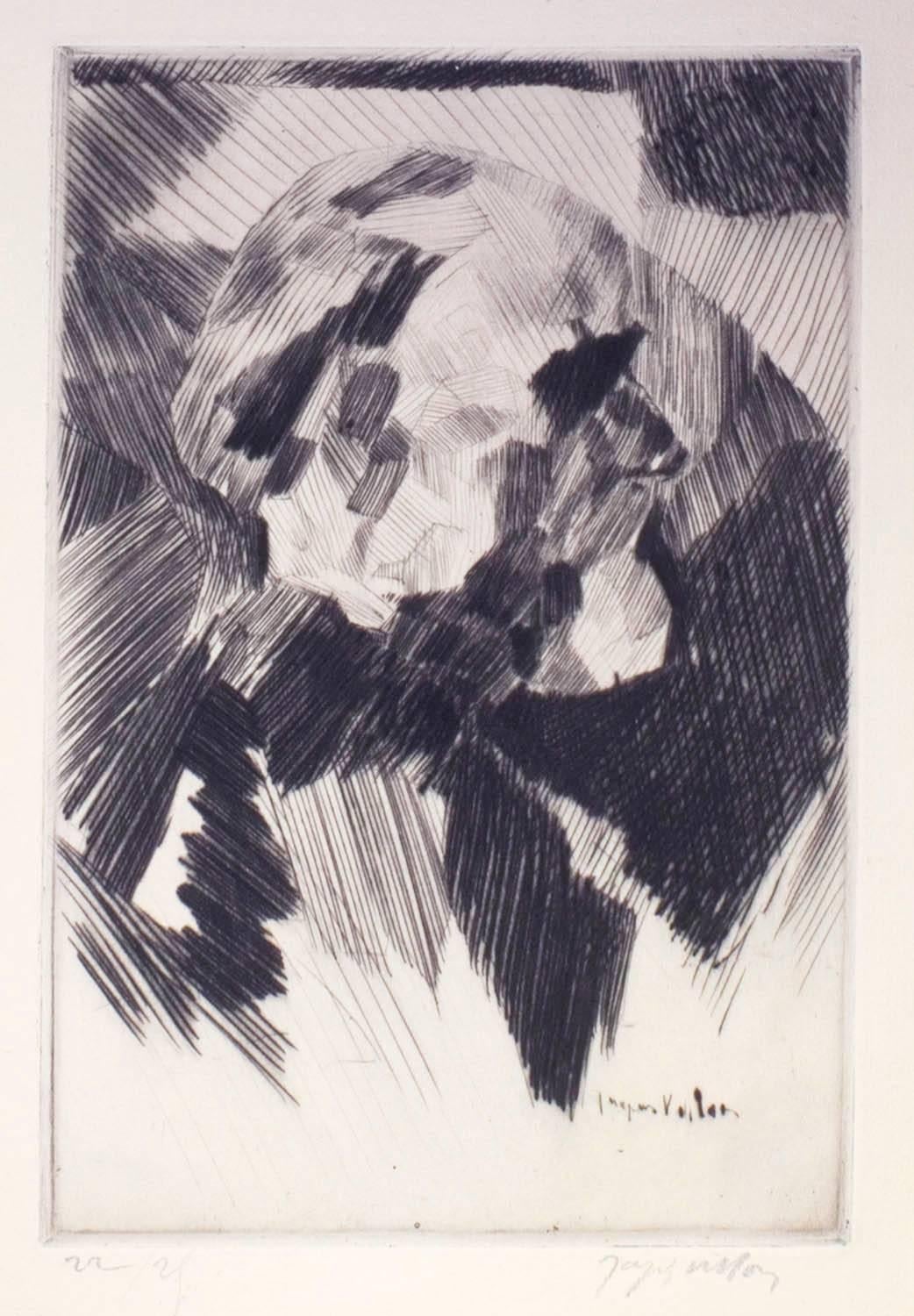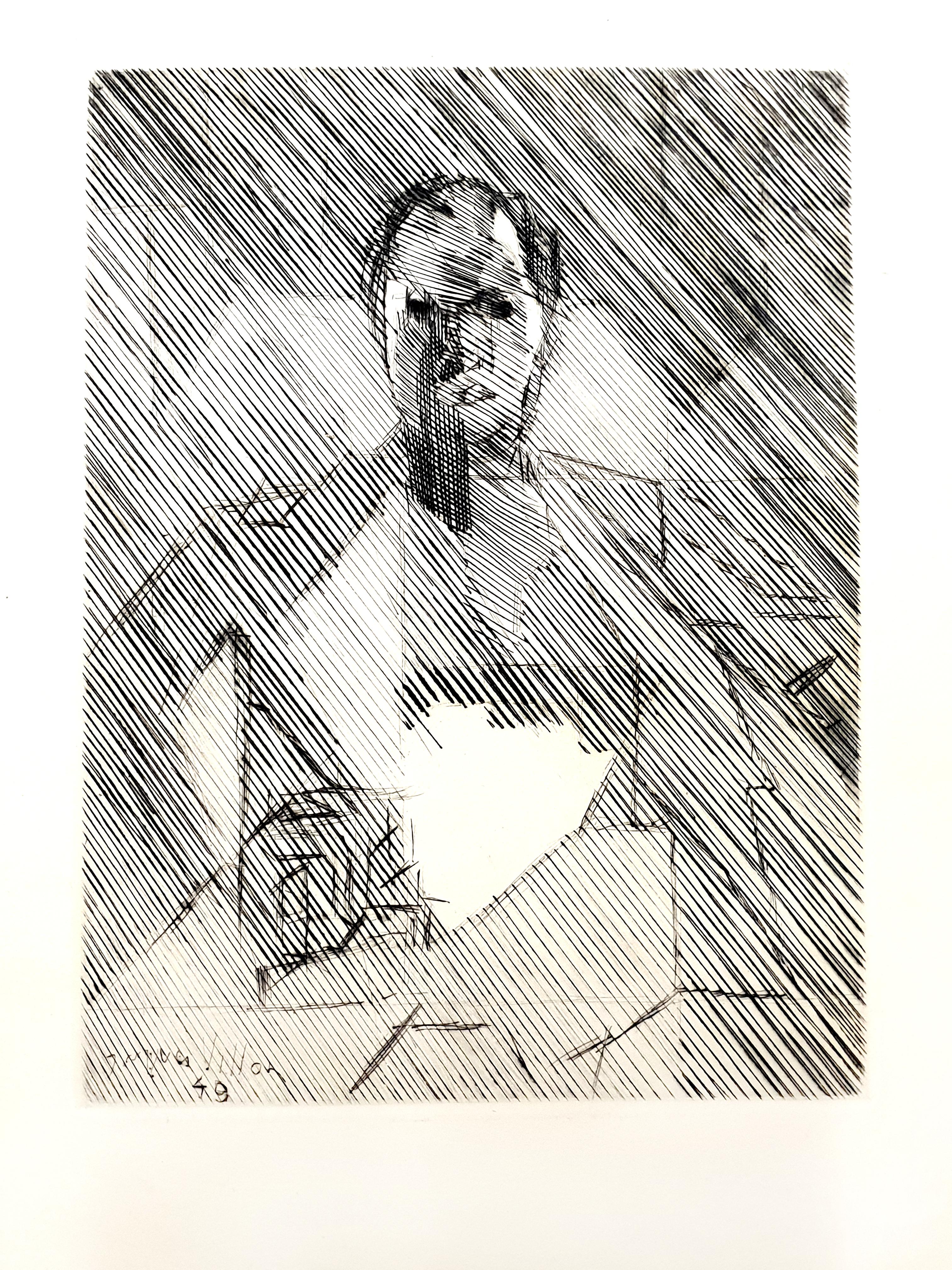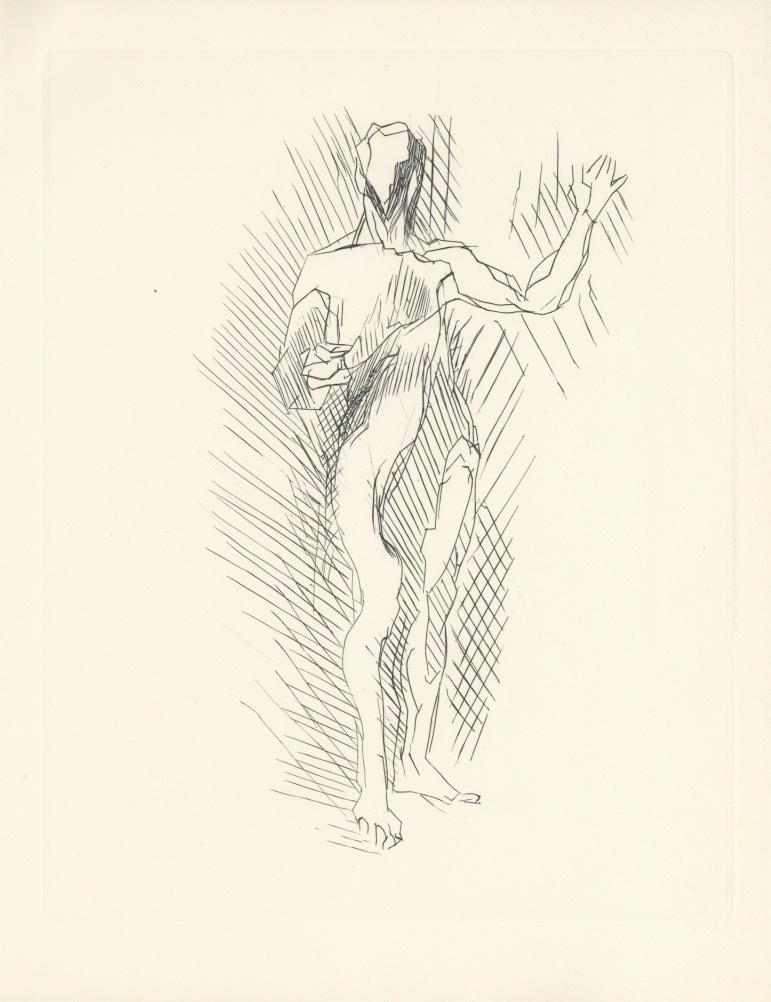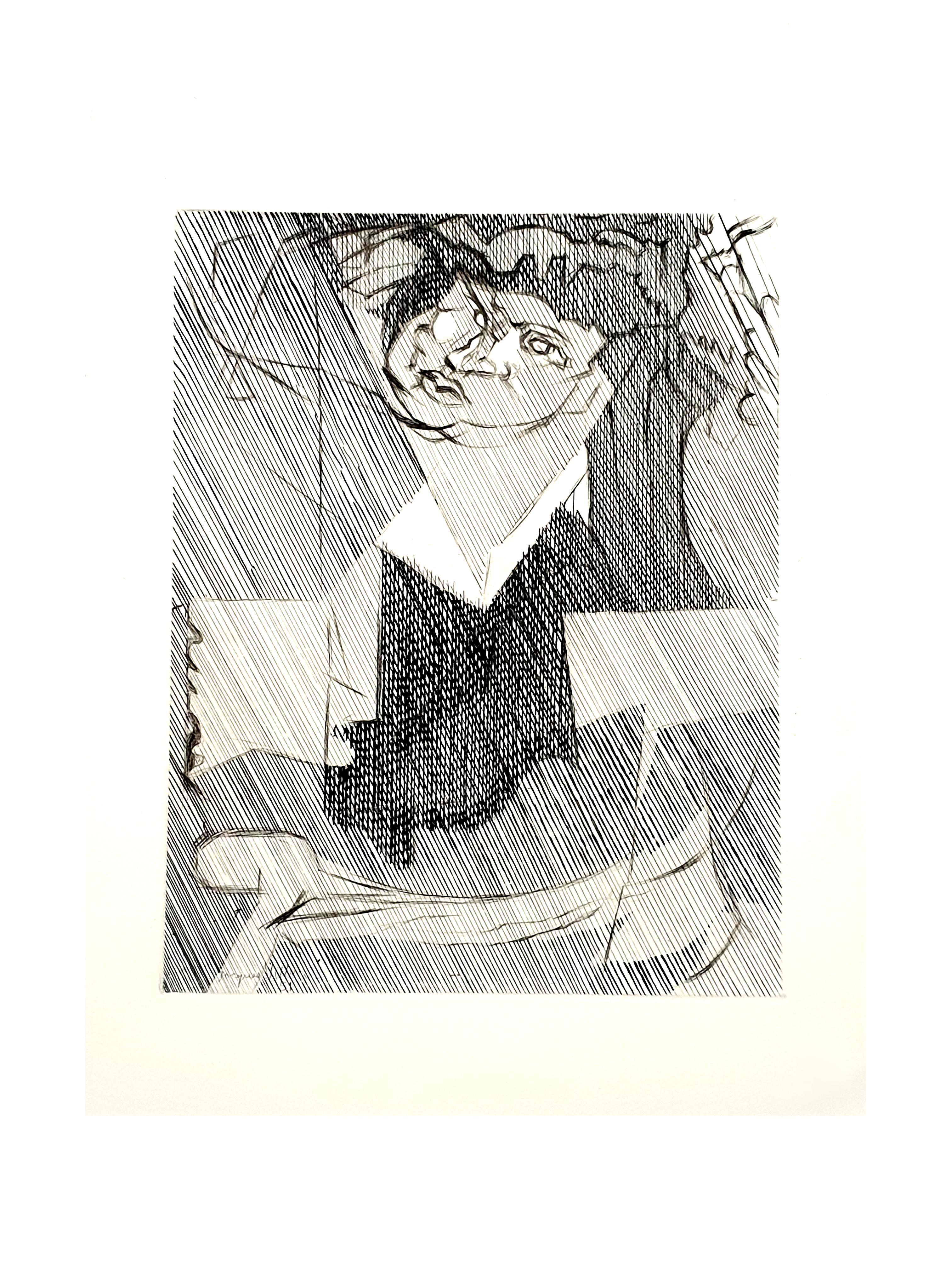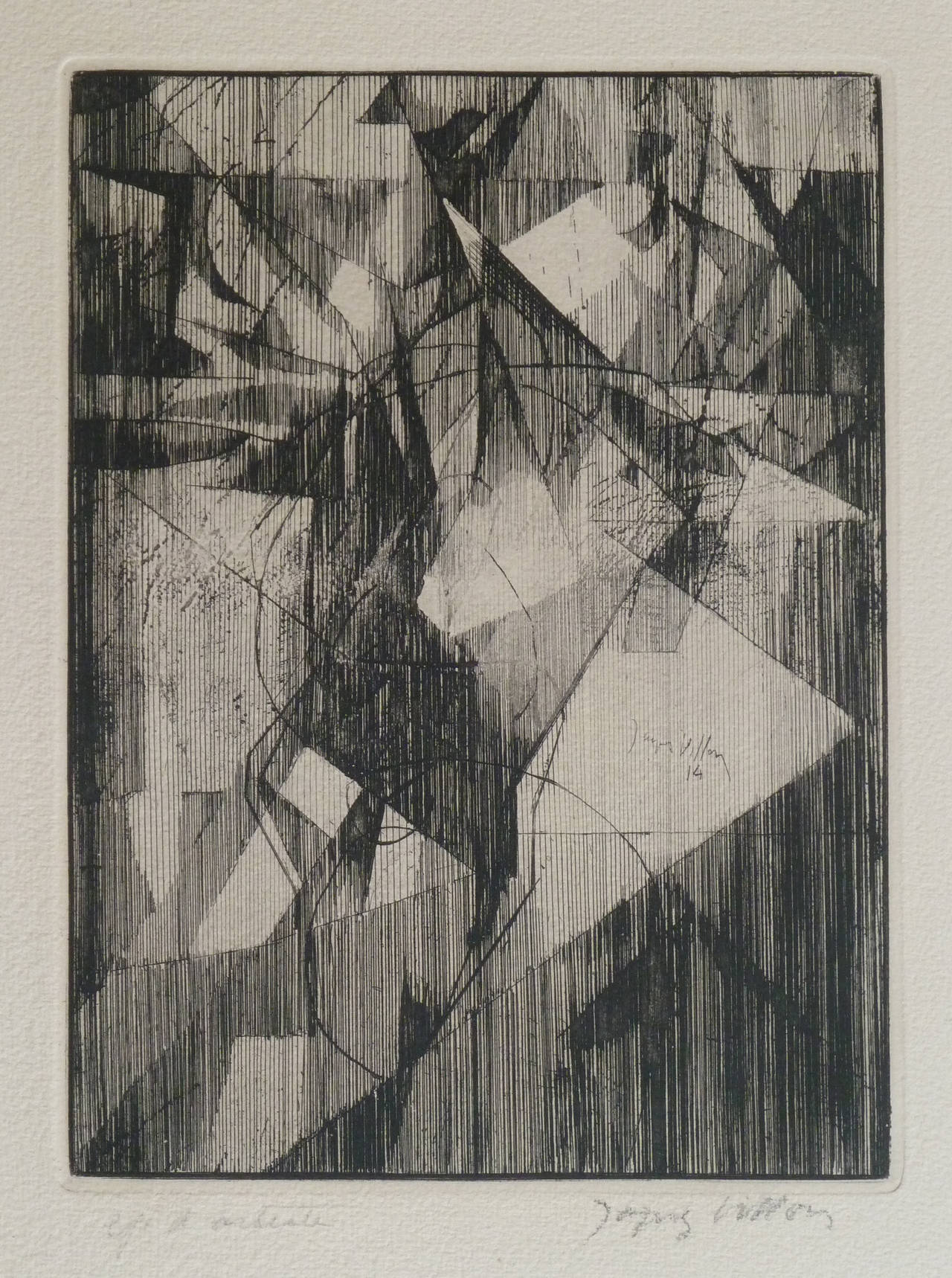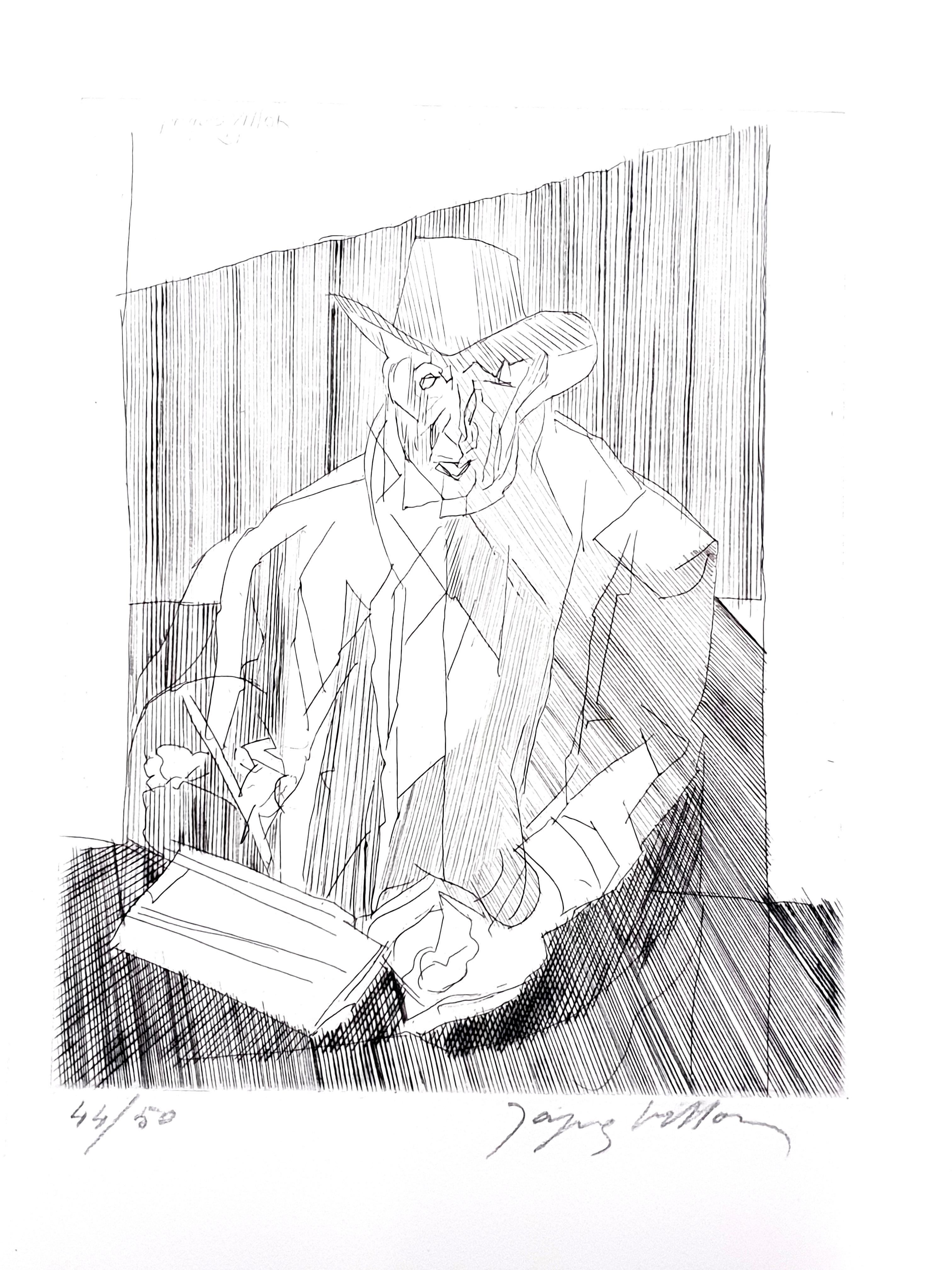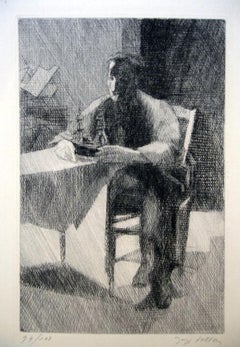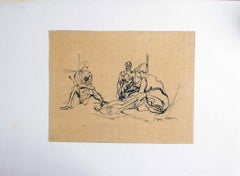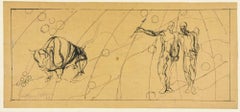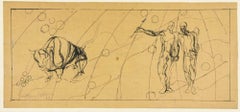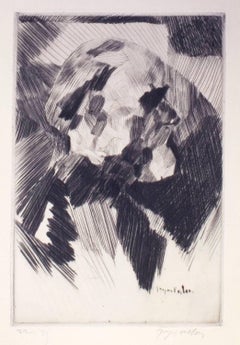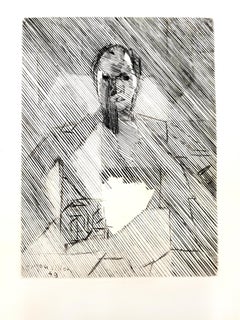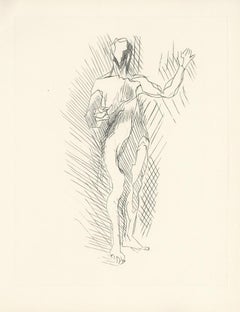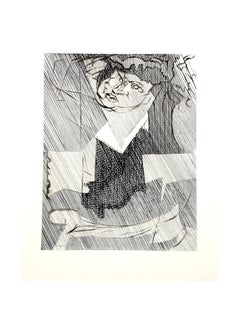Items Similar to Figure
Want more images or videos?
Request additional images or videos from the seller
1 of 6
Jacques VillonFigure1970
1970
$1,703.75
£1,304.67
€1,450
CA$2,394.62
A$2,626.77
CHF 1,374.37
MX$31,263.82
NOK 17,359.10
SEK 16,283.15
DKK 11,046
About the Item
Hand signed and numbered. Edition of 150 prints.
Image dimensions: 15 x 11 cm
- Creator:Jacques Villon (1875-1963, French)
- Creation Year:1970
- Dimensions:Height: 7.09 in (18 cm)Width: 6.3 in (16 cm)Depth: 0.08 in (2 mm)
- Medium:
- Movement & Style:
- Period:
- Framing:Framing Options Available
- Condition:Insurance may be requested by customers as additional service, contact us for more information.
- Gallery Location:Roma, IT
- Reference Number:Seller: J-686481stDibs: LU65031948373
Jacques Villon
Jacques Villon was born Gaston Duchamp in 1875. He was the oldest brother of the artists Marcel Duchamp, Suzanne Duchamp-Crotti and the sculptor Raymond Duchamp-Villon. Initially a law student, in 1894 he went to Paris to study art. It was there that he met Henri Toulouse-Lautrec and other influential artists in Paris, and changed his name to Jacques Villon, after the poet. Villon made prints of some of the most well-known belle-époque portraits and genre scenes of the early twentieth century. Around 1911, he came under the influence of Picasso and other cubists, and became a leading exponent of the style, exhibiting in the 1913 Armory Show in New York. In 1922, the Galerie Bernheim-Jeune commissioned Villon to produce a series of color aquatints after 38 major nineteenth- and twentieth-century paintings. This series included works by Pierre Auguste Renoir, Henri Matisse, Pablo Picasso, Paul Cezanne, Georges Braque, Raoul Dufy, Amadeo Modigliani, Edouard Manet, Pierre Bonnard, and others. Artists who were alive at the time of the printing collaborated with Villon, and signed the prints. The project took ten years to complete. Several of these prints are valued highly today, and some went on to be reproduced by the Louvre Museum as photo-etchings. Villon's 'cubist' etchings, with their characteristic cross-hatching, are amongst the most renowned prints of the twentieth century. Jacques Villon's long career brought him fame. The diverse nature of his paintings, from end-of-the-century portraits to cubist and abstract styles to graphic works, made him a major figure in twentieth-century art. He was made a Grand Officer of the Légion d'Honneur, and upon his death in 1963, and he was given a state funeral.
About the Seller
4.9
Platinum Seller
Premium sellers with a 4.7+ rating and 24-hour response times
1stDibs seller since 2017
7,816 sales on 1stDibs
Typical response time: 1 hour
- ShippingRetrieving quote...Shipping from: Roma, Italy
- Return Policy
More From This Seller
View AllL'Aventure - 1930s - Jacques Villon - Etching - Modern
By Jacques Villon
Located in Roma, IT
Hand Signed. Edition of 108 prints.
Cat. Prouté, 1973, n.250.
Provenance: Prouté 31/3/'73.
Category
1930s Modern Figurative Prints
Materials
Etching
Avant le Bain - Drawing by Jacques Villon - 1926
By Jacques Villon
Located in Roma, IT
Hand signed. From the Countess Anna Laetitia Pecci Blunt Collection. Matting included. Very good condition.
Category
1960s Modern Figurative Drawings and Watercolors
Materials
Paper, Ink
Signs of the Zodiac - Drawing by Jacques Villon - 1937
By Jacques Villon
Located in Roma, IT
Signs of the Zodiac, Taurus and Gemini is a modern artwork realized by Jacques Villon in 1937.
China ink drawing on paper.
Hand signed and dated on the lower margin.
Vintage frame included in this rare artwork...
Category
1930s Modern Figurative Drawings and Watercolors
Materials
Ink, Paper
Signs of the Zodiac, Taurus and Gemi - Drawing by Jacques Villon - 1937
By Jacques Villon
Located in Roma, IT
Signs of the Zodiac, Taurus and Gemini is an original modern artwork realized by Jacques Villon in 1937.
China ink drawing.
Hand signed and dated on the lower margin.
Vintage fram...
Category
1930s Modern Figurative Drawings and Watercolors
Materials
Paper, Ink
Labourage à la brunie - 1940s - Jacques Villon - Original Drawing - Modern
By Jacques Villon
Located in Roma, IT
Hand signed. Original drawing.
Image Dimensions : 15.5 x 16 cm
Category
1940s Modern Landscape Prints
Materials
Paper
Propos sur L'Intelligence book written by Paul Valery - 1926
By Jacques Villon
Located in Roma, IT
Propos sur L'Intelligence is a book written by Paul Valery de L'academiè Francaise.
Copyright by Paul Valery, 1926.
16 x 11 cm.
Contessa Anna Laetitia Pecci collection stamp - B...
Category
1960s Modern More Art
Materials
Paper
You May Also Like
Portrait of E.D.
By Jacques Villon
Located in Chicago, IL
This impression is signed and numbered 24/25. The references for this work are: Auberty & Perussaux 191 and Ginestet & Pouillon E. 277.
This is one of Jacques Villon’s great 1913...
Category
1910s Cubist Portrait Prints
Materials
Drypoint
Jacques Villon - Cubist Man - Original Etching
By Jacques Villon
Located in Collonge Bellerive, Geneve, CH
Jacques Villon - Man- Original Etching
1949
Signed in the plate
Dimensions : 44.5 x 32.5 cm
Category
1940s Modern Portrait Prints
Materials
Etching
"Homme prechant" original etching
By Jacques Villon
Located in Henderson, NV
Medium: original etching. This classic Villon etching was published in Paris in 1955 by Manuel Bruker in an edition of 200. Plate size 11 x 8 1/2 inches (275 x 218 mm). A nice impres...
Category
1950s Figurative Prints
Materials
Etching
Jacques Villon - Cubist Man - Original Etching
By Jacques Villon
Located in Collonge Bellerive, Geneve, CH
Jacques Villon - Cubist Man - Original Etching
From the literary review "XXe Siècle"
1951
Dimensions: 32 x 24 cm
Publisher: G. di San Lazzaro.
Unsigned and unumbered as issued
Category
1950s Modern Abstract Prints
Materials
Etching
Le Petit Équilibriste
By Jacques Villon
Located in London, GB
JACQUES VILLON 1875-1963
(Gaston Duchamp) Damville 1875-1963 Paris (French)
Title: Le Petit Équilibriste, 1914
Technique: Original Hand Signed and Numbered Etching with full m...
Category
1910s Cubist Abstract Prints
Jacques Villon - Man - Original Etching
By Jacques Villon
Located in Collonge Bellerive, Geneve, CH
Jacques Villon - Man- Original Etching
1951
Signed in pencil and numbered
Dimensions : 34.8 x 25 cm
Category
1950s Modern Portrait Prints
Materials
Etching
More Ways To Browse
Purple Hat Alex Katz
Rupert Jason Smith
Salvador Dali Signed Lithograph Card Series
Shepard Black Sabbath
Shepard Fairey Hope
Shepard Fairey Ruth
Tarkay Giclee
Walter Lees
Warhol Margrethe
Warhol Playboy
Warhol Witch
Alex Katz Brisk Day
Alex Katz Ulla
Andre Level
Andy Warhol Birth Of Venus
Andy Warhol Greta Garbo
Andy Warhol Kachina Dolls 381
Andy Warhol Lenin
